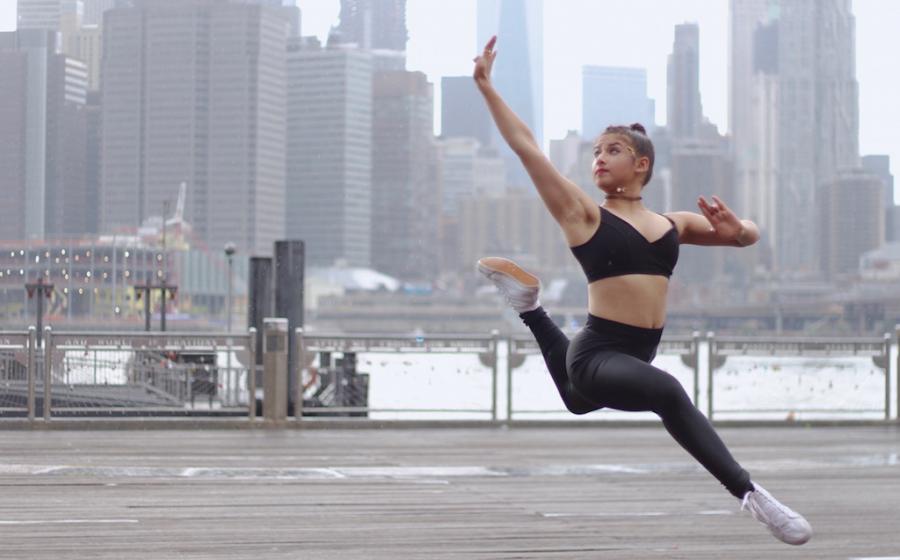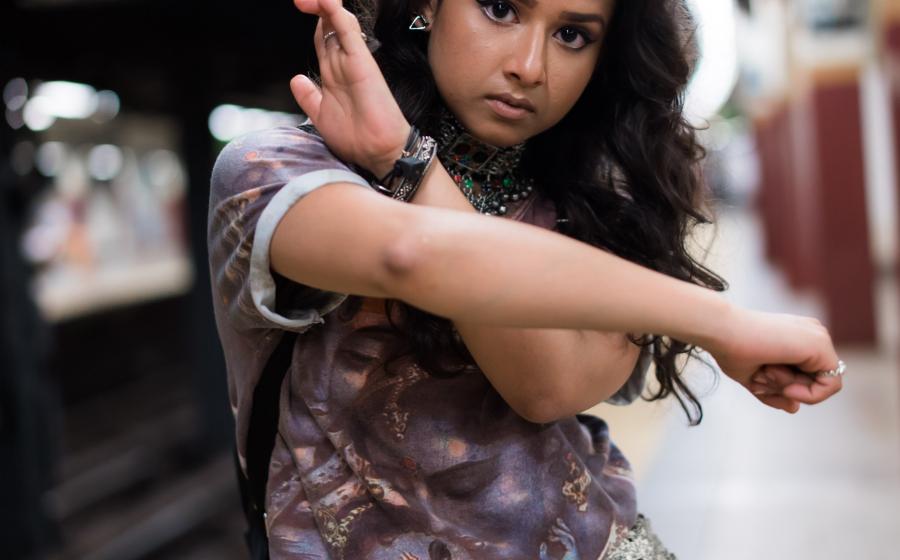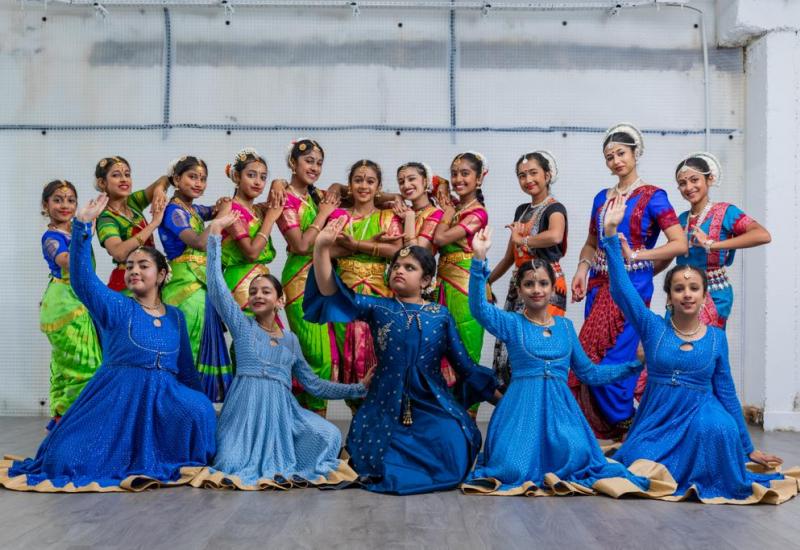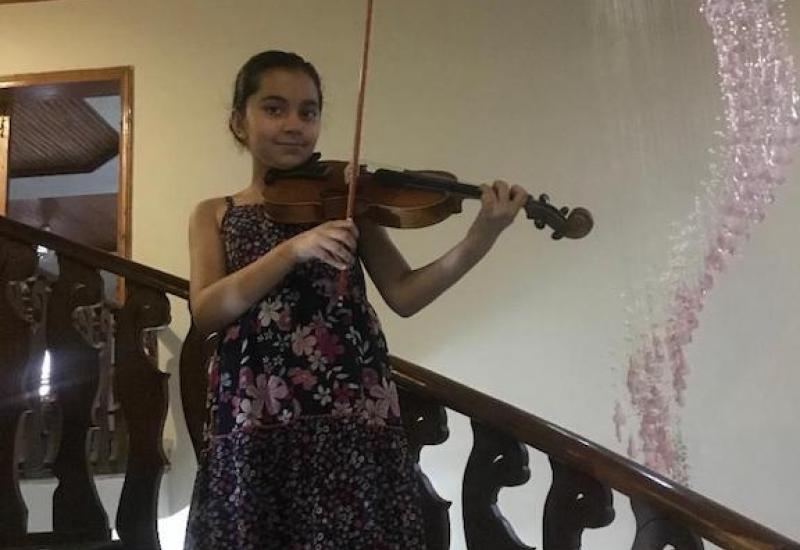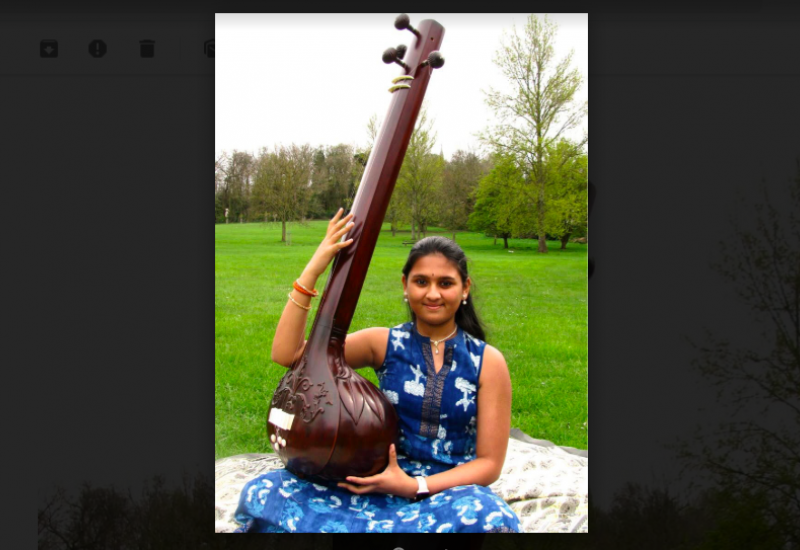Old Stories for New Generations: Ishita Mili
Ishita Mili is a dancer, choreographer and film-maker who draws on bharatanatyam, hip-hop and her Bengali culture – and for whom YouTube can be both a means and an end.
'My history in dance is very complicated...' Ishita Mili laughs as we begin to delve into her Urban Indian choreography that has been making waves over the past year. Born and raised in New Jersey, Ishita became aware of Indian Fusion from a very young age through her choreographer uncle. A trained bharatanatyam dancer, she discovered hip-hop towards the end of her high school career and joined UFP Dance Company. She tells me this as we sit halfway across the world from each other but even with five time zones between us, I immediately feel we’re connecting. Ishita is clearly worldly-wise and deeply engaged in humanity. The more stories she tells me, the more I’m sure that it’s this engagement with people that has led to her development of Urban Indian.
Urban Indian draws on Ishita’s wide dance experience, but primarily on the genres of bharatanatyam and hip-hop. In the past she has dabbled with other dance forms, such as ballet and contemporary dance, but never felt like they fit. She connected with bharatanatyam and hip-hop through rhythm; for her, it’s about the heavy beats that come with the music of both forms and how choreography is created in relation to them. She compares the sound of the ghungroos in bharatanatyam to the lessons that hip-hop has taught her in musicality: “[In bharatanatyam] we’re a part of the music. In hip-hop you can differentiate between layers in the music that have already been created; you can pick and choose the sounds you want to hit.” Ishita’s Urban Indian work combines these two ideas to create, as she describes it, 'a unity that I think is really cool.'
This blending of styles to create Urban Indian wasn’t necessarily intentional: 'It was kinda like a voice that came from inside of me. Of course I love dancing, but I felt like I wasn’t being myself. I was a reflection of other people and what other people wanted of me.' The new medium allows Ishita to tell her own versions of stories from India. “Through Urban Indian, I try to use the few routes that I have in Indian culture, which are bharatanatyam and my Bengali culture, to uncover whatever I can and see why it’s relevant or make it relevant.'
This desire for relevance is rooted in Ishita’s frustrations with the Indian subcontinent and particularly with the popularity of Bollywood: “There’s nothing innately wrong with Bollywood, but it’s not everything in India. I feel like, as a culture, we’re sitting on goldmines of so much art and so much talent and so many stories that we’re not doing anything to share it.”
Ishita is passionate about sharing these stories, but in a way that is accessible to as many people as possible. Commenting on her videos, she claims that “you can understand the story, no matter who you are.” You only have to take a look at Ishita’s YouTube channel to confirm this. Her most recent video, SLUM STORIES, features children from the slums of Kolkata who have taught themselves hip-hop moves by watching YouTube clips on the one smart phone in the neighbourhood. Ishita’s desire for telling stories through dance extends to questioning traditional tales: “We have so much information, but in mythology there are thousands of really strong male gods, but there’s only really one really strong female. "Why is the conversation like that? If we can change the conversation through art, I feel like that’s very powerful.' With her drive, technical skill and creative mind, I have no doubt that Ishita Mili will be the person to do just that.

